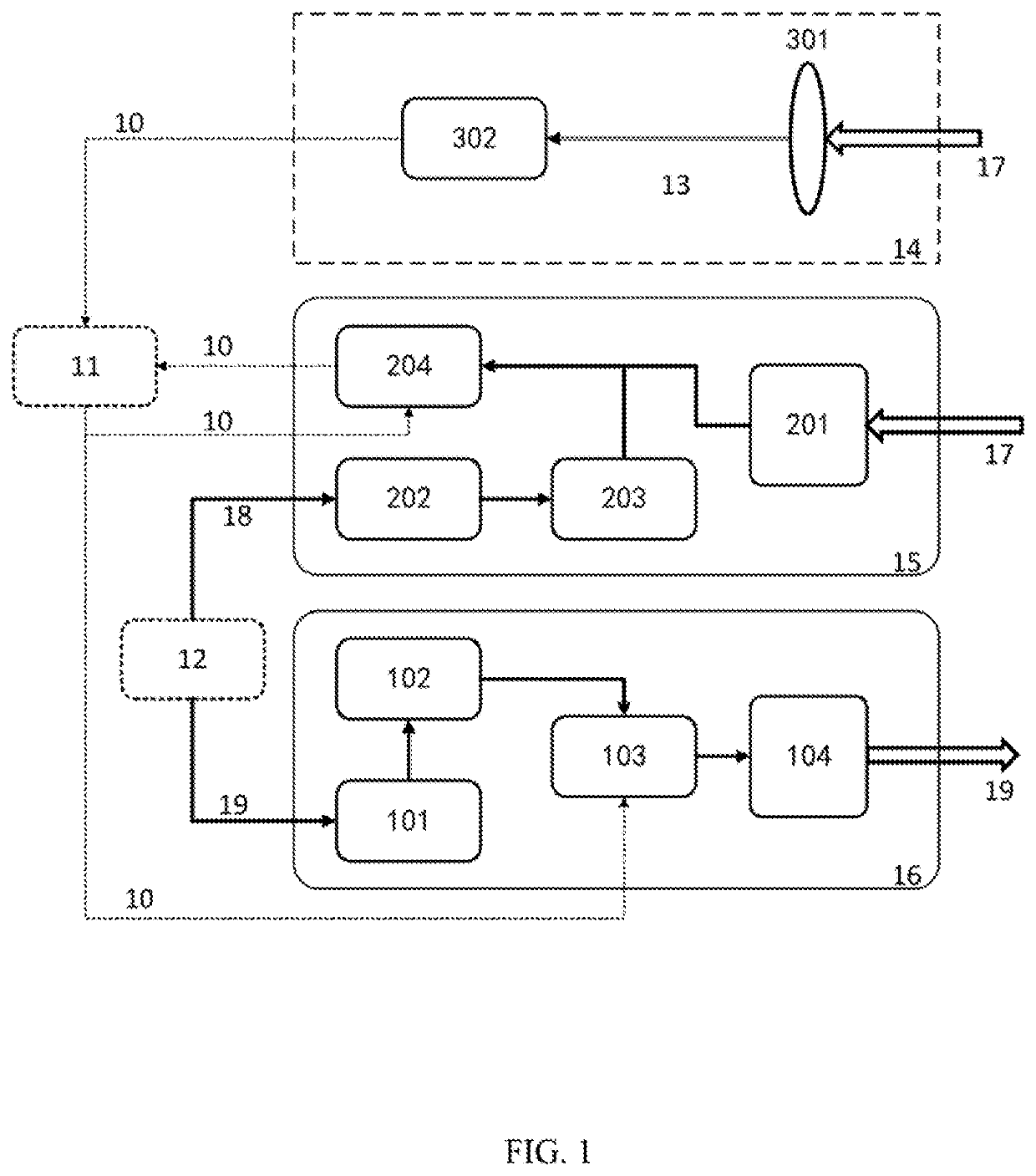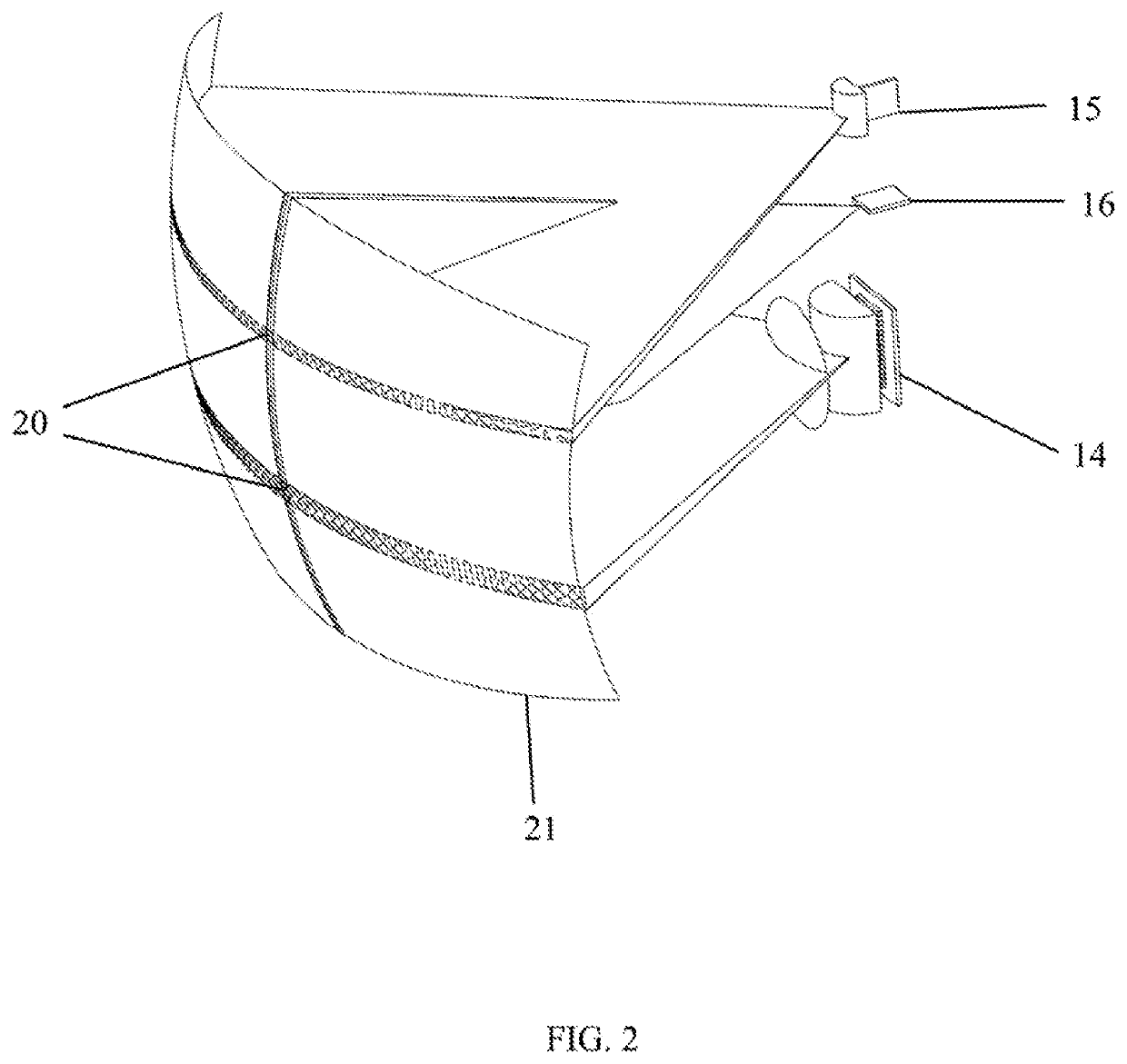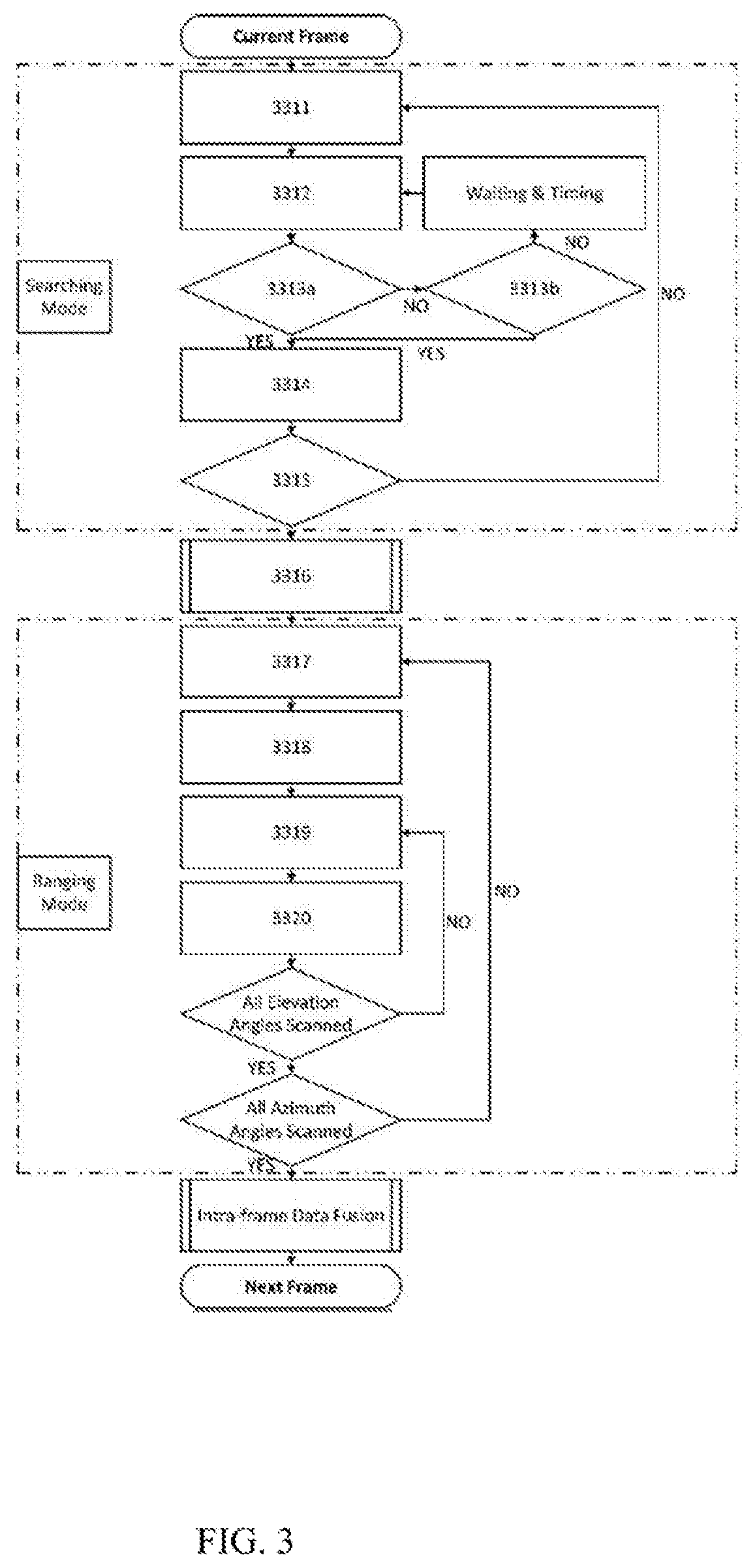Three-dimensional scanning lidar based on one-dimensional optical phased arrays
a phased array, three-dimensional scanning technology, applied in the field of light detection and ranging (lidar), can solve the problems of limiting the improvement of detection speed, affecting the efficiency of automatic driving system, so as to achieve the effect of reducing the burden on the rear-end data processing circuit and the entire automatic driving system, stable operation, and reducing the complexity of cost and control circuits
- Summary
- Abstract
- Description
- Claims
- Application Information
AI Technical Summary
Benefits of technology
Problems solved by technology
Method used
Image
Examples
Embodiment Construction
[0058]The present invention is described in further detail with reference to the drawings and examples. The following specific examples are for illustrative purposes only and are not intended to limit the present invention. At the same time, the technical features involved in different implementations in the embodiments may be combined with each other as long as there is no theoretic conflict in implementation.
[0059]As shown in FIG. 1, the three-dimensional scanning LiDAR based on one-dimensional optical phased arrays comprises a narrow line width laser light source and a high-speed integrated circuit controller, and is characterized by further comprising a transmitting end Tx 16, a coherent receiving end Rc 15, and an incoherent receiving end Ri 14, the transmitting end Tx 16 comprising a detection light input waveguide 101, a first beam splitter module 102, a phase shifter array module 103, and a coupling suppressed one-dimensional transmitting array of sub-wavelength pitch 104 in...
PUM
 Login to View More
Login to View More Abstract
Description
Claims
Application Information
 Login to View More
Login to View More - R&D
- Intellectual Property
- Life Sciences
- Materials
- Tech Scout
- Unparalleled Data Quality
- Higher Quality Content
- 60% Fewer Hallucinations
Browse by: Latest US Patents, China's latest patents, Technical Efficacy Thesaurus, Application Domain, Technology Topic, Popular Technical Reports.
© 2025 PatSnap. All rights reserved.Legal|Privacy policy|Modern Slavery Act Transparency Statement|Sitemap|About US| Contact US: help@patsnap.com



